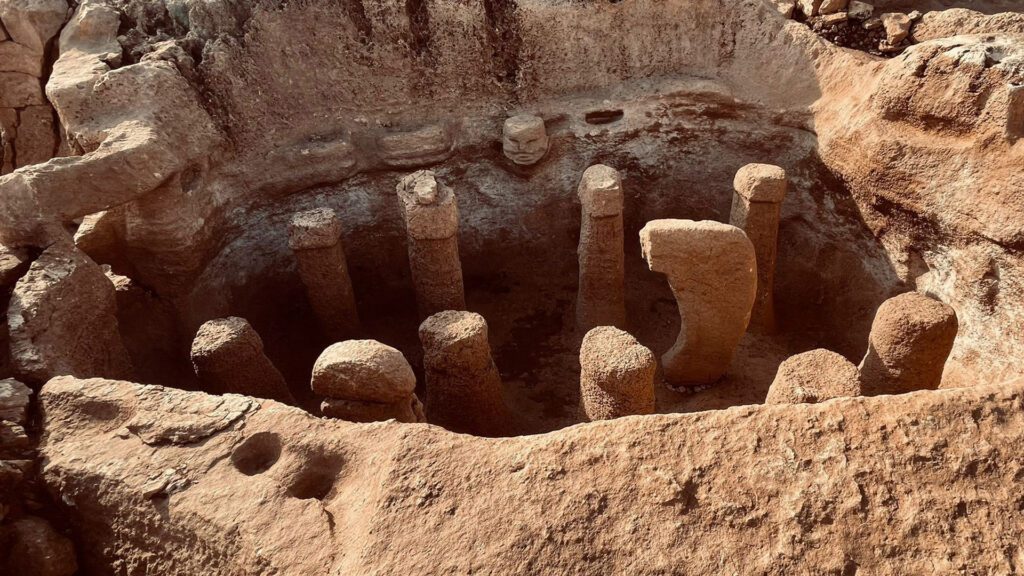Karahantepe, along with world-famous Göbekli Tepe, is part of a cluster of Neolithic settlements spread over 125 miles of southeastern Turkey between the Tigris and Euphrates Rivers. The monumental structures carved out of the bedrock contain T-shaped pillars and carved representations of animals, serpents, and other enigmatic figures like the ones in the Göbekli Tepe.

Scholars have long believed that the domestication of plants and animals compelled people to transition from nomadic hunting and gathering to settling in villages; that this sudden increase in food production gave time to develop complex societies. These beliefs are being challenged by discoveries in Göbekli Tepe and now, Karahantepe, found 20 miles away. Mounting archaeological evidence is showing that Stone Age people built permanent edifices, not only as housing, but for spiritual rituals.
Karahan Tepe is believed to be considerably larger than Göbekli Tepe, covering an area of about 33 acres. Gobekli Tepe is dated between 9500 and 8000 BC and excavations may show that Karahantepe is even older. The site was opened to the public on September 24, 2021. Be the first to see this important site on Far Horizons tour to Eastern Turkey (May 13 – 28, 2023).



